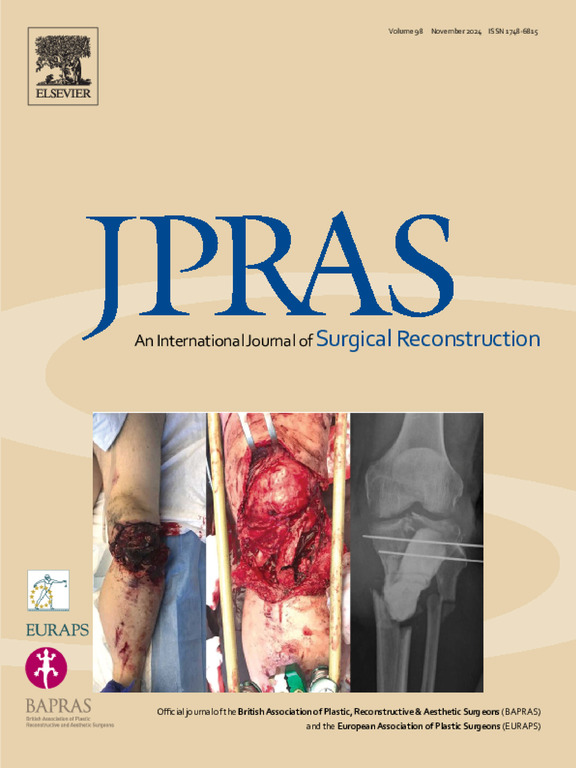Extemporaneous histological analysis according to slow-Mohs combined with Full-Field Optical Coherence Tomography evaluation (FFOCT) in cutaneous tumor pathology: Toward a digital extemporaneous analysis?
IF 2
3区 医学
Q2 SURGERY
Journal of Plastic Reconstructive and Aesthetic Surgery
Pub Date : 2025-03-12
DOI:10.1016/j.bjps.2025.03.025
引用次数: 0
Abstract
Background
Slow-Mohs micrographic surgery use is limited by the logistic constraints it imposes. Full-field optical coherence tomography (FFOCT) is an emerging non-invasive imaging technique that provides skin tissue imaging at the cellular level without tissue preparation.
Objective
Evaluating the FFOCT technology’s diagnostic possibilities in examining surgical sections in micrographic surgery for basal cell carcinomas compared to slow-Mohs.
Materials and methods
Two plastic surgeons provided 24 Mohs sections from 20 patients with basal cell carcinomas from a single-center. Each section was scanned using FFOCT, and a diagnosis-blinded pathologist reviewed the digital images for malignancy. The FFOCT images were compared with the standard histologic analysis of the sample sections.
Results
The agreement between FFOCT imaging results and slide histology included 17 true positives (VP) and 4 true negatives (TN) for debulking and 19 TN and 2 VP for Mohs peripheral cuts. The positive predictive value (PPV) was 85% for debulking, and the negative predictive value (NPV) was 100%. For recuts, the PPV was 50% and NPV was 95%.
Conclusion
We developed a protocol for analyzing skin tumors ex vivo using FFOCT, providing digital images that can be transmitted remotely. This study serves as a proof of concept. The visualization of peripheral margins in a single image and the predictive values need to be improved before clinical use can be considered.
求助全文
约1分钟内获得全文
求助全文
来源期刊
CiteScore
3.10
自引率
11.10%
发文量
578
审稿时长
3.5 months
期刊介绍:
JPRAS An International Journal of Surgical Reconstruction is one of the world''s leading international journals, covering all the reconstructive and aesthetic aspects of plastic surgery.
The journal presents the latest surgical procedures with audit and outcome studies of new and established techniques in plastic surgery including: cleft lip and palate and other heads and neck surgery, hand surgery, lower limb trauma, burns, skin cancer, breast surgery and aesthetic surgery.

 求助内容:
求助内容: 应助结果提醒方式:
应助结果提醒方式:


